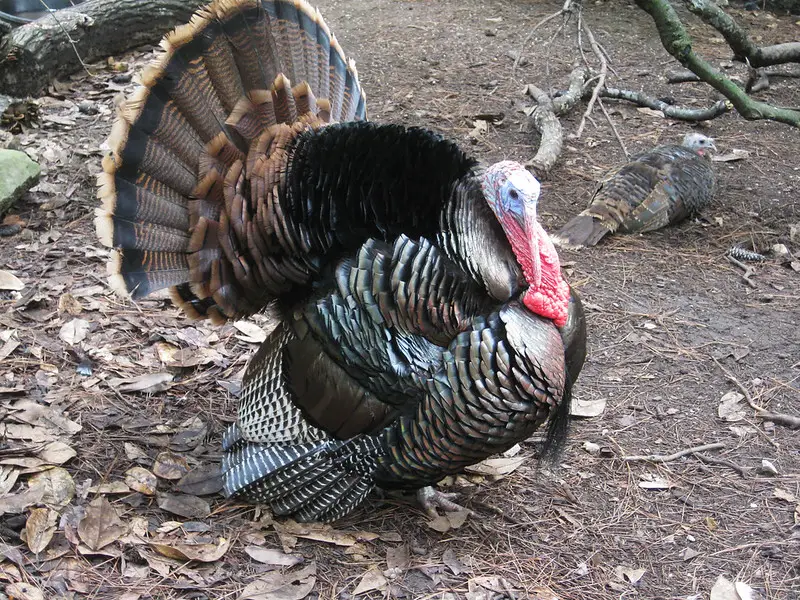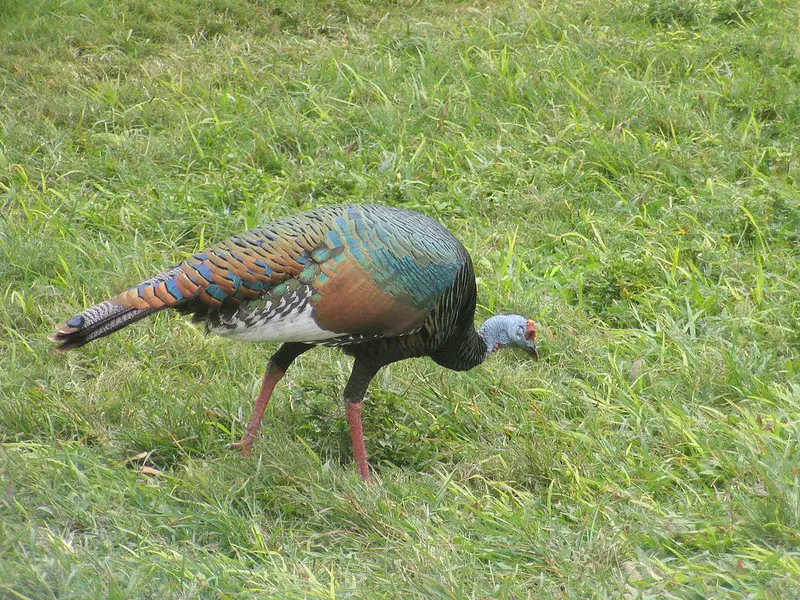
At its purest form, turkey hunting pits the hunter against the wily turkey in a battle of instincts. Fooling a turkey into coming into shotgun range is a great achievement. Looking for an even greater achievement? How about the turkey hunting grand slam?
A hunter completes the turkey hunting grand slam when he kills all four of the most prominent subspecies of turkeys found in the United States: the Eastern, the Rio Grande, the Merriam’s, and the Osceola. There is no time limit that the challenge must be finished in and the subspecies can be taken in any order.
Does Someone Keep Track of the Turkey Hunting Grand Slam?
Yes! The National Wild Turkey Federation (NWTF) keeps track of those who have completed the grand slam. In fact, the NWTF has been keeping records of turkey harvests since 1982.
To register a bird, the hunter must be a member of the NWTF (you can join after killing the bird). The kill must be witnessed by two witnesses, one of whom must also be a member of the NWTF. It costs 15 dollars to register a bird. Registration can be made online or by mail.
Once you have registered all four subspecies with the NWTF, they will send you a certificate, a pin, and publish your name on their website. To read through the list of hunters who have completed the grand slam follow this link.
If you’re not interested in registering your birds, you can still attempt the grand slam for personal satisfaction (or bragging rights with your buddies). Either way, you will have fun traveling and meeting new people who share your passion for turkey hunting.
The Four Subspecies to Achieve the Turkey Hunting Grand Slam

Eastern
As you might imagine, the Eastern subspecies is mostly found on the eastern half of the United States. It can be found in several western states as well. For many people, this is the first subspecies they kill.
The Eastern subspecies can be extremely wary. It is characterized by a loud, thundering gobble. They also have the most impressive beards amongst the subspecies. The tips of the tailfeathers on a Eastern gobbler are a dark brown. They also have a lot of white on their wings.
The Eastern turkey has a reputation as being the toughest of the subspecies to fool. This likely has to do with the fact that Eastern turkeys are commonly found in highly pressured hunting areas. If you would like to learn more about the best places to hunt Easterns, read our article on the top states for this subspecies.
Rio Grande
Some consider the Rio Grande to be the easiest turkey to harvest of the four subspecies that make up the turkey hunting grand slam. Rios are primarily found in Texas, Oklahoma, Kansas, and Nebraska. They can be found in several other western states including Hawaii. If you are looking for a state to take a Rio Grande turkey on public land, check out our article on the top states for Rio turkey hunting.
One reason that Rio Grandes can be easier to hunt is the lack of good roosting sites in their home range. While Rios will cover a lot of area, they will usually return to the same roost site every night, making them easy to pattern. Rios are very receptive to calling and will respond to calls throughout the day.
Compared to the Eastern, Rio Grande turkeys generally have shorter beards and spurs. Their gobbles are not as loud. The tips of their tail fan are buff or tan compared to the darker brown of the Eastern.
Merriam’s
Merriam’s turkeys have the most distinctive tailfeathers of the four subspecies. Nearly white at the tips, the fan of the Merriam’s makes it easy to identify.
Merriam’s are found in the western states including Nebraska, South Dakota, Wyoming, Colorado, New Mexico, and Arizona. Like the Rio Grande, Merriam’s respond very well to a call which is good because you will be calling them across big country! Some argue that the Merriam’
s is easier to kill than a Rio. The drawback is that they can be tough to locate.
Merriam’s turkeys have smaller beards and spurs than Eastern or Rio Grande turkeys. Additionally, their gobbles are not nearly as thunderous as their east coast cousins.
Osceola
Smaller and darker than the Eastern, the Osceola has by far the smallest range of the four subspecies. In fact, the hardest part of hunting Osceolas may be finding a place to hunt them. True Osceolas are only found in the south-central portion of Florida.
Public land turkey hunts in Florida are either hard to draw, highly pressured, or both. Private land hunts can be very expensive. Be prepared to spend some time or money taking your Osceola. If you want help figuring out the best way to complete this leg of the grand slam, read my article on planning your Osceola turkey hunt.
Osceolas are generally the smallest of the subspecies, but they have absolute daggers for spurs. They strongly resemble an Eastern, but the wings will have less white and the tips of the fan feathers will be just a bit darker. An Osceola tom will shake the palmettos with its thunderous gobble.
What To Do After You Finish Your Turkey Hunting Grand Slam
Congratulations, you have killed all four subspecies! As your significant other sighs with relief, you wonder what to do next. Don’t worry. There are several other slams also tracked by the NWTF.
The Royal Slam
The Royal slam consists of the four subspecies from the Grand Slam as well as the Gould’s turkey. The Gould’s turkey is larger than the other four subspecies and has even whiter tips on its tail feathers than the Merriam’s. Though small numbers can be found in Arizona and New Mexico, they are more commonly found in northern Mexico.

Photo courtesy of ryanacandee on Flickr
The World Slam
Once you have completed your Royal Slam, head to southern Mexico in pursuit of the Ocellated turkey. Ocellated turkeys are so colorful they resemble peacocks. Their range consists of the Yucatan Peninsula of Mexico, Guatemala, and Belize.
While pricey, a trip hunting one of the beauties is the thing bucket lists are made of. Once you have bagged one (in addition to the other five subspecies mentioned above) you will have completed the World Slam.
The U.S. Super Slam
To complete the U.S. Super Slam you must kill a turkey in every state that has a huntable population of birds. That is 49 states as Alaska does not have a turkey hunting season. Needless to say, this is quite an achievement. As of the publishing of this article, the NWTF only had 12 hunters on its list of people who had accomplished this slam.
Conclusion
The great thing about these slams is you can take them at your own pace. No need to put any pressure on yourself to complete something that was created for fun.
Whatever your lifestyle will allow you to do, I hope you will consider traveling and to hunt a different subspecies of turkey sometime in the future. It can be lots of fun experiencing the great sport of turkey hunting in a completely different environment than you are used to.


